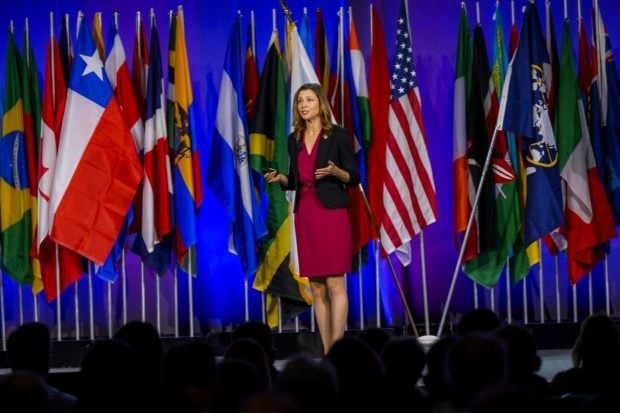"A successful credit union may offer all the latest products, services and technologies, but if the employees and members don't acknowledge the emotional connections, then these products are just commodities."
Mark S. Brennan, president/CEO of Clearview Federal Credit Union in Moon, Penn., sees "experience" as the next dimension in the credit union's development. Brennan adds, "Experience is a critical component of our strategic plan."
The executive team and the board of directors at Clearview understand that a healthy future will be built on more than products, services and delivery channels. They're using "experience strategy" as the lens to re-examine everything they do. The Clearview team's work will ensure that the credit union stands above its rivals in the hotly contested markets of western Pennsylvania and Pittsburgh.
Recommended For You
Vice President of Member Experience Renee Lucas explains experience this way: "Every member interaction is an opportunity to see things from other perspectives. Our strategy includes four areas of focus across the organization: Member experience, digital experience, community/sales experience and employee experience."
Experience is a theory tailored to the times. Popularized in the book "The Experience Economy – Work is Theatre and Every Business a Stage," Professors B. Joseph Pine and James Gilmore predicted a next, fourth stage in the evolution of the American economy. Essentially, Pine and Gilmore argue that after decades of advancement in the "service economy," service is now as much a commodity as products had become during the manufacturing economy that preceded it.
If you find that competing on price and service alone is exhausting, you understand commodity status viscerally. That's the nature of commodity markets, often referred to as "the race to the bottom!"
Due to commodification, Pine and Gilmore make the case that "memorable events" are now as important – arguably more important – than your Visa products, checking accounts or auto loans. If that seems like a bridge too far, welcome to the experience economy. It's a confusing state where, according to Pine and Gilmore, businesses "intentionally use services as the stage, and goods as props, to engage individual customers in a way that creates a memorable event."
The experience economy is an especially disorienting development for financial retailers. We're up to our necks in regulatory burden, technological innovations and threats, consolidation and hyper-competition. But keep those pressures at bay and experience strategy provides a powerful payback.
The arrival of the experience economy is a game changer for community-based institutions – especially those that can make a credible case for serving the best interests of their public. The tools and techniques of experience strategy provide a comprehensive approach to differentiate your institution from its rivals. Experience dramatizes the unique qualities of your institution, creating a playing field that your larger competitors will be helpless to emulate. Where Do We Start?
If experience is the emerging field-of-play tailor-made for mission-based organizations, how do credit unions get started?

Clearview FCU employees show off their MX ("member experience") T-shirts.
Experience Is Action
All credit unions possess credible, compelling missions, visions and values. But left alone, these aspirations are only words on a page. Memorable experiences for consumers and staff members require action and interaction. The first step to create a distinctive experience culture is simply to translate your mission, visions or values into actions.
This is the work of staff members, but especially member-facing staff. Get all of them involved in the strategy. Ask them to design memorable events that will interrupt the mundane routines of financial retail with experiences that demonstrate your values. Suddenly "member engagement" has meaning. Remember, you have a fundamentally different value proposition. Don't leave it in a binder; bring it to life.
Experience Mapping
The next step enrolls the back-office in the experience. Slowly, over years, we've only added to our processes and procedures. Today, they are often complex, cumbersome and sometimes ignored. They typically ask too much of our members. And just as often, technological changes allow us to accomplish tasks more quickly and efficiently, but our procedures haven't been updated for these new capabilities.
Experience strategy asks that we question everything. And look hard to simplify our processes – for staff, when possible, but ultimately to make the member experience surprising, delightful and memorable.

Clearview FCU employees pose for a selfie.
Codify Your Experience Culture in Systems
Now that staff is engaged and delivering compelling, differentiating experiences, and you're simplifying many complex procedures, it's time to also rethink "evaluations." Let's face it. Few are happy with traditional evaluation systems. Managers dread them as much and perhaps more than their direct reports do. They rarely add value to the organization. Experience cultures need to develop talent, not score past task performance.
In future issues, we'll dig deeper into the specific components of outstanding experience cultures. For even the best performing institutions, experience is a change initiative and change is never easy. It requires a clear commitment from the top of the organization, determined effort to create memorable events and changes to processes and procedures to formalize the experience culture.
As Brennan puts it, "Experience has to begin with executive and board commitment. Understanding and accepting the member experience journey is not like any other project with a beginning, middle and end. It's a vision that continuously evolves with dedication."
 Matt Purvis is Principal of Purvis Management. He can be contacted at [email protected].
Matt Purvis is Principal of Purvis Management. He can be contacted at [email protected].
© 2025 ALM Global, LLC, All Rights Reserved. Request academic re-use from www.copyright.com. All other uses, submit a request to [email protected]. For more information visit Asset & Logo Licensing.







